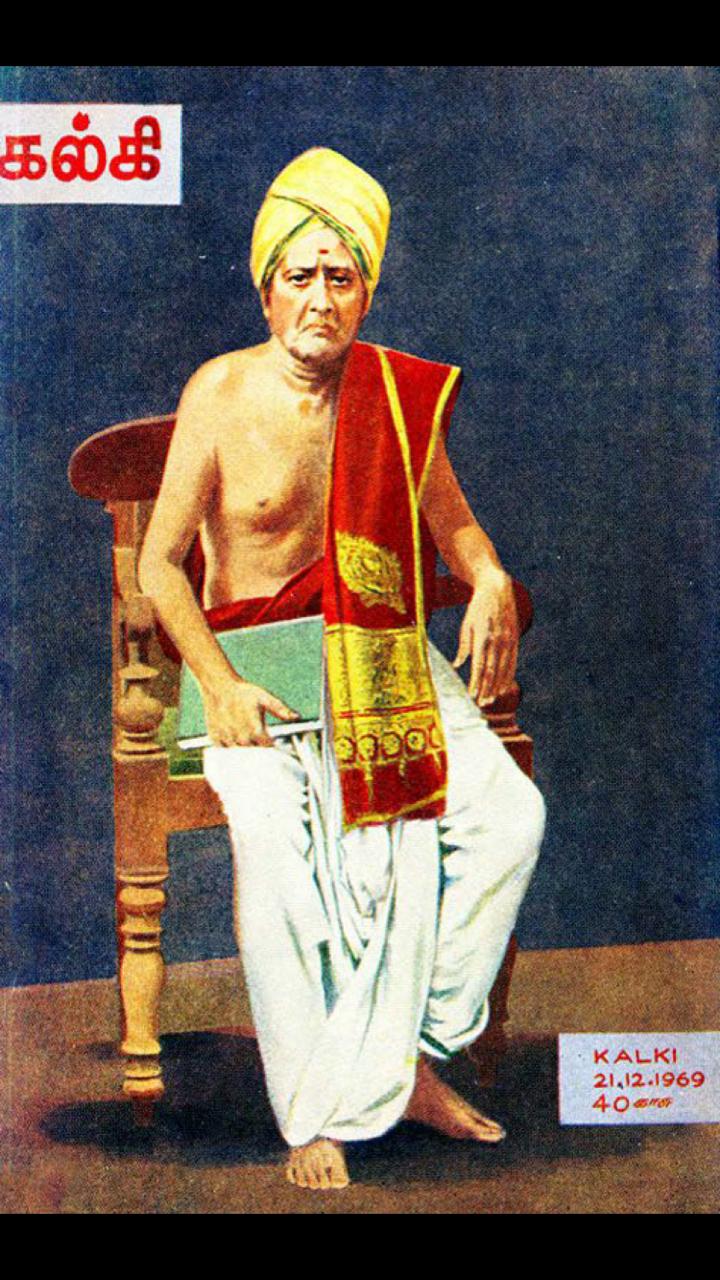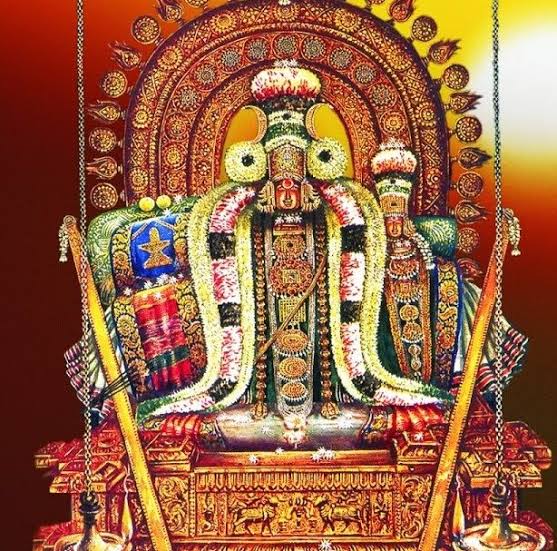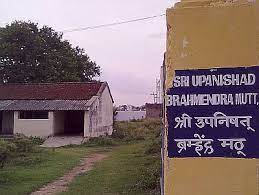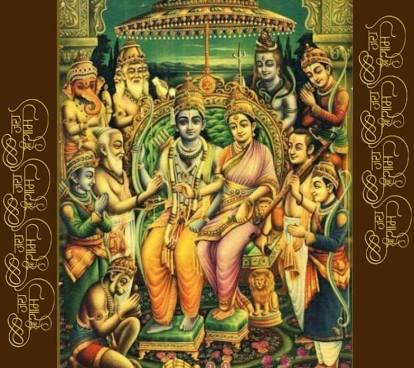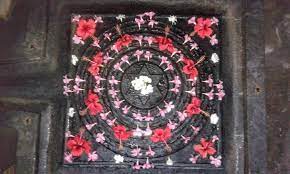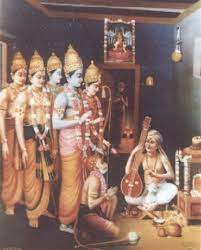The rāga-s in Karnataka Music are innumerous and can be grouped into various ways. The most common, and perhaps the well-known system is to identify them as mēlakarta and janya rāga-s. Mēlakarta-s are 72 in number and the commonly used scheme starts with Kanakāṅgi and ends with Rasikapriya. We do have an alternative scheme, wherein these mēlakarta-s are denoted as ragāṅga rāga-s. The latter system considers Kanakāmbari as the first ragāṅga rāga (mēlakarta) and Rasamañjari as the last one. Though, it is commonly believed that mēlakarta or ragāṅga rāga is the parent raga or the clan head that give rises to janya rāga-s, glancing the pages of history reveal this to be a later developed concept and interested readers can refer to an article by Rāmanāthan (1982) to understand the same.
Though we frequently equate ragāṅga raga -s with the mēlakarta raga-s, they are structurally much different, albeit with a few exceptions (See footnote 1). It is pertinent to note that many of the ragāṅga rāga -s are listed as janya rāga-s of their complementary pair in the mēlakarta scheme elaborated in Saṅgraha Cūdāmaṇi, denoting the importance given by the grantakarta of the latter text in distinguishing ragāṅga-s from mēlakarta-s. However, it is true that the Kanakāṅgi system was much popular than the Kanakāmbari system and many composers, posterior to Tyāgarāja Svāmigaḷ and Muddusvāmy Dīkṣitar have preferred to use this.
Rāgāṅga rāga-s
The term ‘rāgāṅga’ can be seen in the text Bṛhaddēsi of Mataṅga, said to have been written between 6th and 8th century CE, to denote a group of dēśi raga-s (Hēmalatā 2001:1). However, the term in the present parlance of denoting a clan head (of rāga-s) can be seen only from the text Sangīta Sampradāya Pradarṣini of Subbarāma Dīkṣitar. He considers ‘rāgāṅga rāga’ as a sampūrṇa raga which mostly follows grāma raga. This is known as janaka and mēla rāga (Rao 2011:75). His usage of this term was based on work, ‘raga lakṣaṇa’ attributed to Vēṅkaṭamakhī, the author of Caturdandīprakāṣikā.
Only the members of Dīkṣitar family gave a practical and more discernable form to these theoretical entities. Rāmasvāmy Dīkṣitar, a pioneer who served as a perennial source of inspiration for his descendants was the first to apply rāgāṅga rāga-s in his works. The rāgāṅga rāga-s Jhankārabhramari, Tanukīrti, Tōyavēgavāhini, etc., can all be seen in his kṛti-s for the first time (See footnote 2). His descendants Muddusvāmy Dīkṣitar, Bālasvāmy Dīkṣitar, and Subbarāma Dīkṣitar later elaborated on this. Surprisingly, this tradition did not survive posterior to Subbarāma Dīkṣitar. Among the disciple lineage of this family, these raga-s were used by Tanjāvūr Quartette (See footnote 3).
A careful inspection into Pradarṣini, the only text available to understand theoretical and practical aspects of these raga-s reveals they are not mere scales traversing the octaves; many of them are non-linear in their approach. This non-linearity, which gives them a unique and individual svarūpa was crafted purposefully or it was a documentation of a pre-existent practice cannot be ascertained. This feature is to be concentrated between the complementary members (identified by the same number in the 72 mēlakarta-rāgāṅga rāga schemes) of the different rāga classification systems.
An attempt to study these rāgāṅga rāga-s was made by Hēmalatā (2001). She has not only analyzed the compositions notated in Pradarṣini in these rāga-s, but also classified them based on the number of svara-s taken by them in āroha and avarōha. This kind of characterization can only be done for rāgāṅga rāga-s as melakarta-s are sampurna in both āroha and avarōha, differing only in their svarasthāna-s. This confers them a homogenous nature and any possible svara combination can be applied uniformly to all, at least theoretically. Contrarily, the nonlinearity seen with the rāgāṅga rāga-s makes them special and make us delve more into them.
These rāga-s deserve more individual attention as we do have many compositions outside the text Pradarṣini and also attributed to Muddusvāmy Dīkṣitar. Moreover, taking a single rāgāṅga and analyzing all the compositions available gives us a better view of the raga svarūpa seen in these compositions. This also facilitates us to compare the lakṣaṇa of the rāgāṅga-s seen in the compositions available in Pradarṣini with those not notated in Pradarṣini. This section is intended to cover these rāga-s.
As a first step, this paper will highlight the phrases unique to the rāga Stavarāja, as seen in Pradarṣini, identify the differences between Stavarāja and Ṣadvidhamārgaṇi and proceeds to understand the svarūpa of Stavarāja seen in the compositions not notated in Pradarṣini.
The complementary pair
Stavarāja, an unpopular rāga is placed as 46th rāgāṅga raga in the Kanakāmbari – Rasamañjari scheme followed by the Dikṣitar family. Ṣadvidhamārgaṇi is its complementary rāga in the Kanakāṅgi – Rasikapriya mēlakarta scheme. Both the rāga-s take the same svara varieties – śuddha ṛṣabha, sādhāraṇa gāndhāra, prati madhyama, catuśruti dhaivata, and kaiṣiki niṣadha apart from saḍja-pañcama. This similarity had made many of us believe that they are indeed the same rāga-s but with different names. However, the compositions in this rāga reveal discernable differences existing between them. Let us first examine Ṣadvidamārgiṇi and then proceed to understand Stavarāja.
Ṣadvidhamārgaṇi
Like any other mēlakarta, this is a sampūrṇa rāga, a raga with all the seven svara-s in both āroha and avarōha, arranged in order. Almost all the compositions available in this raga are treated similarly (only the works of composers who lived and/or composed prior to 20th century are considered). The mēla rāgamālika of Mahā Vaidyanātha Śivan (Subraḥmaṇya Śāstri 1937:55-56) handles this more like a sampūrṇa scale with no special phrases. However, we do find phrases that cannot be restricted within the scale in few other compositions, as can be seen from the table (See footnotes 4 and 5). Hence, Ṣadvidhamārgaṇi can be visualized as a krama sampūrṇa rāga with few exceptional phrases. However, PDS seems to be important and is perhaps the only phrase transferred from gīta to kṛti (outside its linear scale).
Table – Special phrases seen in the raga Ṣadvidhamārgaṇi
| Composition |
Phrases |
| Ā rē rē sīta manōhara – Gīta |
SGRG, SMG, MDP, PDS and PNS |
| Gñanamosaga rāda of Tyāgarāja Svāmigaḷ |
PDS |
| Antaraṅga bhakti of Kōtīṣvara Ayyar |
PDM and NDM |
Stavarāja
Contrary to Ṣadvidhamārgaṇi, its complimentary pair Stavarāja is introduced by Subbarāma Dīkṣitar as an audava-audava rāga, lacking (varjya) gāndhāra – niṣādha in the ascent and pañcama – ṛṣabha in the descent. Though this can be simply represented as SRMPDS SNDMGS, the real svarūpa of this rāga can be perceived only by studying the gīta, attributed to Vēṅkaṭamakhin, a kīrtana and a sañcāri of Muddusvāmy and Subbarāma Dīkṣitar respectively. This raga also features in the ragāṅga rāgamalika, ī kanakāmbari of Subbarāma Dīkṣitar, a lexicon to understand the rāgāṅga rāga system (See footnote 6).
Analysis of the above-mentioned compositions reveals the presence of a lot of phrases outside the prescribed mūrccana, which can be learned from the table. The svara ṛṣabha occurs only as SRMP or GRS. Whenever we try to train our minds to accommodate the lakṣana prescribed in the mūrccana, we are surprised by any one of the outliers observed in the table. This surprise element continues with the kṛti of Muddusvāmy Dīkṣitar ‘stavarājādinuta’ on Lord Bṛhadīṣvara of Tanjāvūr.
Bṛhadīṣvara was a source of inspiration for Muddusvāmy Dīkṣitar, perhaps during his stay in Tanjāvūr, as a court musician in the Court of Śerfōji II (r1798-1832). Many of the kṛti-s composed on Bṛhadīṣvara and his consort Bṛhadamba are in rare rāga-s and Stavarāja is one such. With very few exceptions, the kṛti-s (on Bṛhadīṣvara and/or on his consort Bṛhadamba) do not have much information on sthala, tīrta or mūrti. Neither these kṛti-s are filled with heavy philosophical content. Certainly, this kṛti cannot be placed under the exceptional category.
‘Stavarājādinuta’ is a small kṛti set in pallavi – anupallavi – svara pattern. Interestingly, the prayōga SRMPD featuring in the gīta ‘ravi samnibha’ and in the sañcāri cannot be located in this kṛti! Contrarily many new phrases not seen in the gīta can be seen here. Despite these differences, we can clearly see the influence of this gīta on Muddusvāmy Dīkṣitar. Lot of similarities can be seen between the two compositions. Both the compositions start with the phrase DMGS. The immediate phrase succeeding DMGS is SNNSNNP in the gīta and S,NSNNP in the kṛti. Both the compositions use dhaivata and niṣādha as janṭa in plenty as PNN, DDNDP, etc. Also, the svara ṛṣabha is used sparsely as in gīta. All these features direct us to conclude that the mentioned kṛti of Muddusvāmy Dīkṣitar was composed based on this gīta. In that case, we need to account for the prayōga-s featuring in this kṛti alone.
We need to analyze two compositions of Subbarāma Dīkṣitar before arriving at a conclusion, namely ī kanakāmbari, a rāgamālika mentioned in the earlier part of this article and a sañcāri. The Stavarāja segment in the rāgamālika too starts with the phrase DMGS and is followed by SNDS. It is a faithful reproduction of phrases seen in the gīta, though in his own style. The rāgamālika and sañcari also have unique phrases seen only in the kṛti of Muddusvāmy Dīkṣitar like SRGS. Interestingly, his sañcāri, set to maṭya tāla also has many phrases not seen in other compositions – gīta and kṛti. We find MDDMP, PDP, PGGS, DNND, and NPDM only here. This raises the question again – the authority on which Dīkṣita-s introduced these new phrases.
Table – Phrases available in the raga Stavaraja
| Composition |
Phrases |
| Ravi samnibha – Gīta |
GGRS, PMP, PNND, PSNS, NDPM, NPMPSS and SNP |
| Stavarājādinuta – Kīrtana |
MDPM, DRS, DDNDP, SRS, SNDP and PMG |
| Sañcāri |
MDDMP, PDP, PGGS, DNND and NPDM |
An interpretation of this kṛti, as notated in Pradarṣini can be heard here.
This issue can be addressed in two ways – these phrases can be considered as an innovation by Dīkṣita-s or Dīkṣitar family must have had additional materials like tāna-s or gīta-s in their possession, displaying these phrases. The second possibility appears more plausible as Subbarāma Dīkṣitar reiterated several times in his text that he had many more materials in his possession and has not published them due to space restraint. A similar issue was explained by the author in an article on Gōpikāvasanta.
When the compositions of Muddusvāmy and Subbarāma Dīkṣitar in this rāga are compared, we can see the latter gave an elaborate treatment, more so than the former. We find all the phrases of gīta in his rāgamālika and many new phrases in his sañcāri. Whereas, despite taking inspiration from the gīta and modeled like that, the kṛti ‘stavarājādinuta’ does not have all the phrases that can be located in the gīta. We have already observed such a finding when we discussed the kṛti ‘rudrakopa’ and the rāga Rudrapriyā.
It can be reminded that the text Saṅgraha Cūḍamaṇi, which places many of the rāgāṅga-s as a janya-s of mēlakarta-s, fail to recognize Stavarāja. This makes us believe, not all could have been aware of the rāgāṅga rāga-s like Stavarāja, in the past. Perhaps, these rāga-s could have been known only to the privileged disciples of Vēṅkaṭamakhī. Hence, to understand a rāga like this, it is essential for us to go through all the available compositions notated by Subbarāma Dīkṣitar. Based on these facts, it can be speculated that Dīkṣita-s could have had an access to unpublished materials, available only with them, carrying all these phrases, transmitting the legacy to the next generation.
The phrases not confirming with the mūrccana given in Pradarṣini carries high significance. Many of the phrases like GRS, SNP, etc., gives more flexibility for an otherwise strict scale. This peculiar feature is seen only with the rāgāṅga rāga-s. This feature is to be compared with their counterpart, Ṣadvidhamārgaṇi, wherein the latter strictly follows the scale with very few exceptional phrases. These exceptions too do not create an aural impact, as these rāga-s are all karma sampūrṇa-s with these phrases occurring occasionally. Whereas the vakra phrases, forming an integral part of the rāga architecture are seen only in the rāgāṅga-s creating a different melodic texture. This is accentuated when a svara given as varjya (ga – ni in the āroha and ri – pa in the avarōha) in mūrccana occurs in the composition, that too repeatedly. Hēmalata also highlighted this point in her thesis. She proceeds further and says such a course is not possible with the janya rāga-s having varjya svara-s, in the mēla scheme. For example, the rāga Āndōḷika with the scale SRMPNS SNDMRS cannot have the phrase PMRS or SNP (Hēmalatā 2001:89).
Madhurāmbām bhajarē
Perhaps the only other kṛti available in this rāga is ‘madhurāmbām bhajarē’. This kṛti is attributed to Muddusvāmy Dīkṣitar and forms a component of ‘Non – Pradarṣini kṛti-s’. Non-Pradarṣini kṛti-s are those compositions not notated by Subbarāma Dīkṣitar in his texts but found in the books published later and are attributed to Muddusvāmy Dīkṣitar.
Kallidaikuricci Sundaram Ayyar (Sundaram Ayyar 1992:39-40), a disciple of Ambi Dīkṣitar has published a series of books, predominantly containing the kṛti-s of Muddusvāmy Dīkṣitar in notation. These books serve as an additional source to know about the kṛti-s of Muddusvāmy Dīkṣitar, especially the ones not published by Subbarāma Dīkṣitar. For the same reason, these kṛti-s usually find a place under the ‘spurious’ category. He has notated two kṛti-s in this rāga – ‘stavarājādhinuta’ and ‘madhurāmbām bhajarē’. The kṛti ‘stavarājādhinuta’ much resembles the version given by Subbarāma Dīkṣitar and hence the second kṛti will be taken up for discussion.
This is a paean to the Goddess Mīnākṣi of Madurai. This kṛti, along with nine other kṛti-s is usually grouped as Madhurāmba vibhakti kṛti-s. Interestingly, only two of the nine kṛti-s are notated in Pradarṣini, namely ‘śri mīnākṣi gauri’ in the rāga Gauri and ‘śyāmalāṅgi mātaṅgi’ in the rāga Śyāmaḷa. It is to be noted that both the kṛti-s does not carry the śabda ‘madhurāmba’.
The kṛti ‘madhurāmbām bhajarē’ describes Mīnākṣi as a daughter of the Sage Mataṅga (mataṅga tanayām) enshrined in Madurai (madhurāmbām), the one who delights the heart of Manu, Kubera, etc., the giver of prosperity (dhaninīm) and the one who is pleased with praises offered in the rāga Stavarāja (See footnote 7). This kṛti is free of prosodic errors, as seen with many other ‘spurious’ kṛti-s, attributed to Muddusvāmy Dīkṣitar.
The kṛti starts with the phrase PDSSND and has all the standard phrases that fall within the mūrccana of this rāga. The non-mūrccana phrases, typical to these rāgāṅga-s are also seen aplenty. These include SRS, PGS, DND, DMG, and DRS. It is to be noted that the phrase PGS is seen only in the sañcāri of Subbarāma Dīkṣitar and DRS occurs only in the kṛti ‘stavarājādhinuta’. SRS occurs in both the kṛti and sañcāri. There occurs a prayōga MDPD, unique only to this kṛti. This phrase occurs thrice, in madana janakādi, mataṅga tanayām, and mādhavādya. The authority on the use of this phrase is not clear.
Excluding the phrase MDPD, the rāga lakṣaṇa portrayed here is much in line with the Stavarāja of the gītaṃ, kṛti and sañcāri. However, the approach seen here is distinguishingly different from the above-mentioned compositions. First, the vital phrases like DMGS, PNNDPM, NNDPM, SNNP, etc., seen in the gīta, kṛti (stavarājādhinuta) and rāgamālika are missing in this kṛti. These phrases are abundant and used repeatedly in the compositions notated in Pradarṣini and when heard together, the melodic structure of Stavarāja can be better perceived. The absence of these phrases in ‘madhurāmbām bhajarē’ fails to create an image of Stavarāja, as experienced with the other kṛti-s mentioned. In addition, we see phrases like MDP- PM-PG-ND, a style usually not seen in the kṛti-s of Muddusvāmy Dīkṣitar notated in Pradarṣini. Second, the svara-s gāndhāra, niṣādha, dhaivata are often used as janṭa in the compositions notated in Pradarṣini. In this kṛti, niṣādha alone occurs as a janṭa svara as SNND in two places. Third, there are no mandra sthāyi phrases in this kṛti. The phrases in the mandra sthāyi are an integral part of a kṛti of Muddusvāmy Dīkṣitar. In the kṛti-s of Muddusvāmy Dīkṣitar notated in Pradarṣini, we see mandra sthāyi phrases either in the basic structure of a kṛti or in its svara segment. Very rarely, we find an exception, like ‘arunācalanātham’ in Sāraṅga. In fact, the majority of the older versions of the kṛti-s of Tyāgarāja Svāmigaḷ too have mandra sthāyi phrases. The absence of such a phrase in this kṛti is intriguing. The kriti ‘madhurāmbām bhajarē’ as notated by Kallidaikuricci Sundaram Ayyar can be heard here.
Though the difference of opinions exists on the authenticity of this kṛti, the Stavarāja presented here abides the rāga lakṣaṇa given in the text Pradarṣini. If we exclude the phrase MDPD, the phrases seen in this kṛti are authorized by the compositions mentioned earlier. At the same time, it is to be accepted that the presentation of Stavarāja in this kṛti is very different from the compositions seen in Pradarṣini and sounds more like a variant of Ṣadvidamārgaṇi.
Conclusion
Many of the rāgāṅga rāga-s are much different from their complimentary pair in the mēlakarta system. Stavarāja is one such rāga which is to be distinguished from Ṣadvidamārgaṇi. Subbarāma Dīkṣitar gives three compositions in this rāga and all display a similar rāga lakṣaṇa. It is through these compositions, we can perceive the rāga Stavarāja.
Madhurāmbām bhajarē, a kṛti attributed to Muddusvāmy Dīkṣitar is not seen in the text Pradarṣini. The phrases seen in this kṛti are very much in line with Stavarāja of Pradarṣini, with the exclusion of a single phrase. However, the melodic structure of this kṛti does not fit with the approach seen in the compositions notated in Pradarṣini. The melodic structure perceived by Muddusvāmy Dīkṣitar has been modified or it was composed by a musician who was inspired by the Stavarāja handled by Dikṣita-s remains a mystery.
Footnotes
1.It is technically not correct to say Kanakāṅgi is equivalent to Kanakāmbari, Rasikapriya is equivalent to Rasamañjari and so on, and treating the kṛti-s composed in these two rāga-s in a similar way.
2.The usage of these raga-s in kṛti -s are considered here, as gīta-s in these raga-s, notated in Pradarsini predate the works of Rāmasvāmy Dīkṣitar.
3.Analysis of their compositions and a manuscript with a descendant of Tanjavur Sivanandam indeed reveals they have composed in many of the rāgāṅga rāga-s. The readers can refer to an article by the author for more details. The article can be accessed here. https://tlmthelostmelodies.wordpress.com/2020/11/19/sri-guruguha-navaratnamalika/
4.Though this kṛti is now sung in Purvikalyani, it is said to have been composed in Sadvidamargani. This kṛti also had a version in Gamanasrama. The phrase PDS is seen in the version given by Srinivasa Ayyangar (pg 101), but conspicuously not present in the version notated by S. Parthasaradhi (1986:58-60).
5.The phrase PDS is seen in the kṛti ‘antaraṅga bhakti’, notated by S.Rajam (1998:87-88).
6.A poet by name Kṛṣṇa Kavi composed this rāgamālika, which was tuned by Subbarāma Dīkṣitar.
7.Translation by V Gōvindan, can be accessed on the site http://guruguha.blogspot.com/2008/03/dikshitar-kriti-madhurambam-bhajare.html.
References
Hēmalatā R. A study of the rāgāṅga rāga-s in the Sangīta Sampradāya Pradarṣini of Subbarāma dīkṣitar. 2001. PhD Thesis submitted to Department of Indian Music, University of Madras.
Pappu Vēṇugōpāla Rao (Ed). 2011. Saṅgīta Sampradāya Pradarṣini of Subbarāma Dīkṣitulu. English Translation – Volume I. The Music Academy.
Pārthasārati S. 1986. Śrī Tyāgarājasvāmi Kīrtanaigaḷ – Tillaisthānam Pātam. Published by Sadguru Śrī Tyāgabraḥma Ārādana Kaiṅkaryam, Madras.
Rājam S. 1998. Śrī Kōtīsvara Ayyarin Kīrtanaigaḷ. Published by Rasikās, Mailapūr.
Rāmanāthan N. 1982. The concept of mēla. Journal of The Madras University, Volume LIV (1), accessible in the site http://musicresearchlibrary.net/omeka/items/show/2318
Śrīnivāsa Ayyaṅgār K.V. Saṅgīta Cintāmaṇi. Published by M.S. Rāmulu and Company, Madras.
Subraḥmaṇya Śāstri (Ed).1937. The Mēlarāgamālika of Mahā Vaidyanātha Śivan. Published by The Adyar Library, Madras.
Sundaram Ayyar A. Kallidaikuricci. 1992. Śrī Dīkṣita Kīrtana Mālā, Part XI. Published by Music Book Publishers, Madras.

